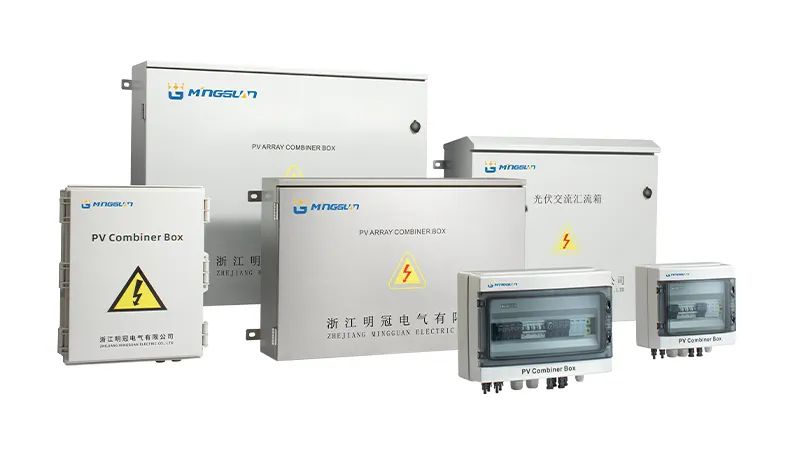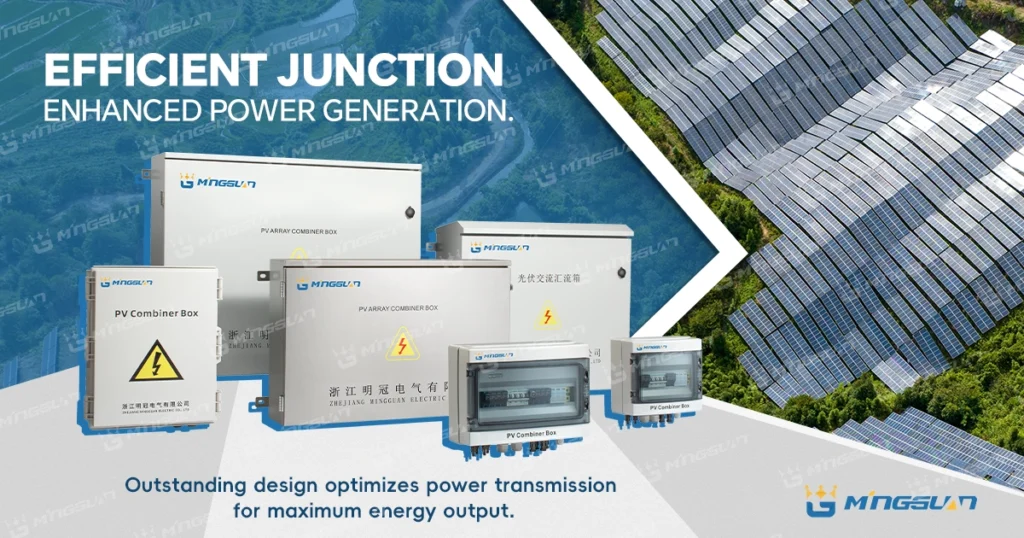An MCB distribution box is a critical component in modern electrical systems, offering protection and organized power distribution.
This article explains what an MCB distribution box is, its purpose, and how to choose the right type for residential or commercial use.
We’ll explore 3-phase systems and multi-way configurations (2-way, 8-way, 12-way, and 16-way), compare sizes, and answer common questions.
Whether you’re upgrading an existing system or planning a new installation, this guide simplifies your decision-making process.
What is an MCB Distribution Box?
An MCB (Miniature Circuit Breaker) distribution box is a centralized unit that houses multiple MCBs to control and distribute electricity safely across a building.Think of it as the “control center” of your electrical system.
It splits the main power supply into smaller circuits, each protected by an MCB that automatically shuts off during overloads or short circuits.
These boxes are typically made of durable materials like plastic or metal and come in varying sizes based on the number of circuits they support.
For example, a 2-way MCB distribution box manages two circuits, while a 16-way box handles sixteen.
Purpose of an MCB Distribution Box
The primary role of an MCB distribution box is twofold: safety and organization.
Safety: MCBs prevent electrical fires and equipment damage by cutting off power during faults.
Unlike traditional fuses, they can be easily reset after tripping.
Organization: Instead of messy wiring, the box neatly organizes circuits for appliances, lighting, and outlets.
This makes troubleshooting easier and reduces downtime during repairs.
Whether you’re using a basic 2-way MCB distribution box for a small home or a 16-way system for a commercial space, the goal remains the same: reliable, safe power distribution.

How to Choose a Suitable MCB Distribution Box?
Selecting the right MCB distribution box depends on three factors: electrical load, phase type, and number of circuits.
Electrical Load: Calculate the total power consumption of your appliances. Heavy-duty equipment (e.g., air conditioners) requires higher-rated MCBs.
Phase Type: Homes typically use single-phase systems, while industries rely on a 3-phase MCB distribution box for higher power demands.
Number of Circuits: Choose a box with enough ways (slots) for current and future needs.
An 8-way MCB distribution box suits medium-sized homes, whereas a 12-way or 16-way box is ideal for offices or workshops.
Always consult an electrician to ensure compatibility with local regulations and your building’s wiring.
3 Phase MCB Distribution Box
A 3-phase MCB distribution box is designed for commercial or industrial settings where heavy machinery operates.
Unlike single-phase systems, which use one live wire, three-phase systems distribute power across three live wires, offering balanced loads and higher efficiency.
These boxes support larger MCBs (e.g., 63A or 100A) and are often paired with 12-way or 16-way configurations to manage multiple high-power circuits.
For example, a factory might use a 3-phase, 16-way MCB distribution box to run motors, lighting, and HVAC systems simultaneously without overloading.
Multi Way MCB Distribution Box Size
The number of circuits supported by the MCB distribution box directly affects its scope of application. From homes to industrial sites, choosing the right distribution box can improve safety and management efficiency.
The following will analyze in detail the typical application scenarios of 2-way, 8-way, 12-way and 16-way MCB distribution boxes.
2 way MCB distribution box: the choice of small residences
Applicable scenarios:
Small family spaces: such as independent garages, tool rooms, garden sheds or storage rooms.
These areas usually only need to power 1-2 devices (such as lighting, power tools or charging sockets).
Temporary power supply: temporary power distribution at construction sites, power supply for outdoor activities, etc., which is convenient for rapid deployment and disassembly.
Advantages and uses:
The 2-way distribution box has a compact structure, simple installation and low cost.
For example, in a garage, one MCB can control lighting, and the other can power electric doors or charging piles.
Due to the small number of circuits, maintenance and troubleshooting are extremely convenient, suitable for non-complex power environments.
8 way MCB distribution box: the choice for small and medium-sized residences
Applicable scenarios:
Ordinary family residences: apartments and villas with two or three bedrooms and one living room.
Small shops: places where multiple areas need independent power supply, such as convenience stores and barber shops.
Advantages and uses:
The 8-way design can meet the needs of basic household electricity distribution. For example:
Lighting system (2-3 channels: living room, bedroom, kitchen).
Socket circuit (3-4 channels: living room TV, kitchen appliances, bedroom charging equipment).
Special high-power equipment (1-2 channels: air conditioner, water heater).
This distribution method avoids overloading of a single circuit and is easy to manage.
For example, when the kitchen circuit trips, other areas can still use electricity normally, reducing interference in life.
12 way MCB distribution box: the choice of large-sized residences and small businesses
Applicable scenarios:
Large residences: duplex floors, villas with more than four rooms, or multi-functional residences equipped with home audio-visual rooms and gyms.
Small office: Office space with less than 10 people, which needs to support multiple devices such as computers, printers, air conditioners, etc.
Catering stores: Cafes, fast food restaurants, etc., which need to run refrigerators, ovens, lighting and POS systems at the same time.
Advantages and uses:
12-way distribution boxes provide higher flexibility and scalability. For example:
In a home, each bedroom can be divided into separate circuits, and dedicated circuits (such as security systems, garage doors) can be added.
In an office, lighting, office equipment, air conditioning and backup circuits can be divided to ensure independent operation of key equipment.
16 way MCB distribution box: the choice for commercial and industrial environments
Applicable scenarios:
Medium-sized enterprises: factory workshops, storage centers, data centers.
Commercial complexes: large restaurants, supermarkets, hotels.
Multi-story buildings: office floor power distribution, hospital department power supply.
Advantages and uses:
The 16-way design supports complex power networks and is suitable for high-density equipment environments. For example:
In a factory, independent circuits can be allocated for production line machines, lighting systems, ventilation equipment, safety exit signs, etc.
Each floor of the hotel’s guest rooms uses a 16-way box to control the air conditioning, lighting and sockets in each guest room, and centrally manage electricity consumption in public areas.
| Choosing the Right MCB Distribution Box | |||
| Ways | Application Scenario | Pros | Cons |
| 2-way | Sheds, temporary setups | Low cost, easy installation | No room for expansion |
| 8-way | Mid-sized homes, small shops | Balances cost and functionality | May lack slots for upgrades |
| 12-way | Large homes, cafes, offices | Flexible, future-ready | Requires more space |
| 16-way | Factories, hotels, hospitals | Handles complex systems | Higher upfront cost |
Can I install an MCB distribution box myself?
While DIY installation is possible, hiring a licensed electrician ensures compliance with safety standards and proper wiring.
Where should I place the MCB distribution box?
Install it in a dry, accessible area, away from flammable materials. Garages, basements, or utility rooms are common choices.
How often should I inspect the MCB distribution box?
Check annually for signs of wear, loose connections, or corrosion. Test MCBs by tripping them manually.
Can a 3-phase MCB distribution box work in a single-phase home?
Yes, but it’s unnecessary unless you plan to upgrade to high-power appliances later.
What’s the lifespan of an MCB distribution box?
With proper maintenance, it can last 20–30 years. Replace it if components show damage or outdated technology.
